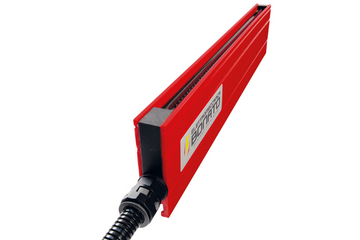What is electrostatic charge?
At least once in a lifetime it has happened to everyone to get shocked, touching something or simply getting out of the car.
Why does this happen? It is a very common phenomenon, and electrostatic charge is entirely to blame. Electrostatic charges are formed due to the phenomenon of electrization: in other words, it involves adding electric charge to a body that is originally uncharged (thus electrically neutral).
On a more general level, we can say that electrostatic charge buildup occurs when insulating materials (which in an ordinary situation are electrically neutral) are stressed and subsequently become polarized, thus causing an exchange of electrons across the surface.
It therefore also happens that an electrostatic charge is generated when two surfaces rub against each other, or when two surfaces that are in contact jerk away from each other. This side phenomenon is harmful: it often results in the charged parts sticking together, or it forms sparks that cause a real risk of an explosion. The risks and damage caused by the uncontrolled accumulation of electrostatic charges cannot be taken lightly.
Preventing damage
Damage caused by electrostatic charges is numerous, although it frequently happens that the causes are not recognized and therefore not treated properly.
Some practical examples:
- Increase in production waste
- Slowdown or interruption of production processes
- Fires and explosions
- Discharges to operators
- Attraction of dust and impurities
So what can be done to concretely control this phenomenon, which can be very dangerous and harmful to industrial production?
Fortunately, there are numerous practical remedies to keep the situation under control at all times, eliminating the risks altogether. And we at Elettromeccanica Bonato are experts in creating these solutions, even tailor-made ones! The sectors that benefit from the intervention of our bars are many: textiles, packaging, painting, printing, wood, converting… in short, there is no situation in which we cannot successfully intervene!
Examples of electrostatic charge bars
In addition to the wide selection of antistatic bars, Elettromeccanica Bonato‘s products include electrostatic charging bars. What are they all about? Let’s take a closer look at a few of the products right now, so that we can get a better idea of the features and strengths of these bars-all of which are accumulated with a focus on safety and energy savings.
The CBR-10 electrostatic charging bar, for example, is designed to adhere one material to a surface or two different materials to each other. The charge bars are connected to a generator for high voltage. By generating precisely the high voltage, this generator allows positive or negative ions to be created on the tips of the bar. In this way, the material is pushed toward the ground giving rise to temporary bonding. Equally valued by industry is our CBR-05 electrostatic charging bar, which is distinguished by its ability to adhere one material to a surface or two materials to each other. This bar is designed to be completely safe: in fact, it prevents the formation of sparks and accidental discharges.
These electrostatic charging bars are very easy to install and can be used in many industrial applications; they are safe in every respect, have extremely low power consumption, and are also well suited for high speeds.
Each bar is then connected to an electrostatic charge generator; two examples are the ECG 60 generator and the ECG 30 generator produced by Elettromeccanica Bonato. Both provide high voltage regulation and can be remotely operated by the operator thanks to the presence of an analog remote control. The controls of the generators are also very intuitive, allowing the user to operate them with total ease and speed.















